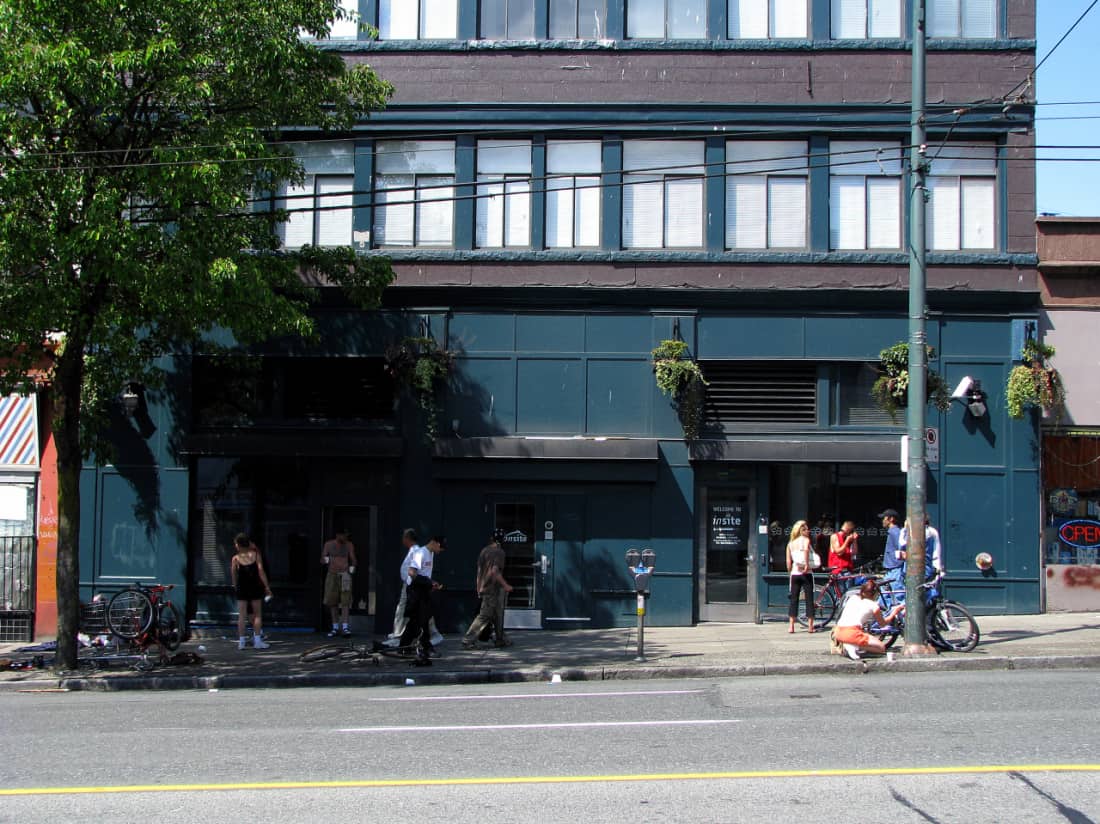
Canada is in the midst of an opioid epidemic. If you look at the first six months of 2018 alone, there were over 2,000 opioid-related deaths from January to June — 94 per cent of which were accidental.
Despite the scale of this crisis, government response has been lacklustre despite continual and urgent calls to action from doctors, public-health employees, front-line workers and those directly affected by the deaths, including family members and users themselves.
However, a couple of solutions recently proposed in Canada have attracted attention. These include a safe-injection site advocated by AIDS Saskatoon as well as the call for heroin compassion clubs from the B.C. Centre for Substance Use, or BCCSU.
Safe-injection sites provide clean, safe environments for drug users with health-care workers and support staff on hand to intervene in the event of an overdose. Typically, they provide drug testing, screening for infectious diseases, basic health services, education on drug use and referrals to health and social services — including rehab.
The BCCSU report recommends a strictly regulated heroin market, which allows the drug to be purchased in moderate amounts through co-operative compassion clubs. Prospective members would be heavily screened, including a physician assessment. There is already a prescription-based program operating out of a clinic in Vancouver with 150 patients currently participating.
Compassion clubs would also provide many of the same health services offered by safe-injection sites. Both of these models adhere to the principles of harm reduction. Essentially, harm reduction encompasses a range of strategies and practices that aim to minimize the negative consequences of drug use.
Harm reduction is grounded in social justice and recognizing that drug use is a complex phenomenon often influenced by socioeconomic factors such as race and poverty as well as by one’s life history, such as past trauma. This approach challenges the common refrain that drug users simply made a choice to engage in risky behaviour and must now reap what they sow.
The strategies and principles of harm reduction often appear to be in conflict with more orthodox drug policies, which are based on supply reduction, prohibition and law enforcement. In contrast, harm reduction can be difficult to comprehend.
The approach is often criticised for enabling drug users and for being a waste of taxpayer dollars. The more callous commentators argue that overdoses should not be curbed but are in fact a perfectly suitable way of removing undesirable elements of the population. For those of us who value human life, this latter critique can be easily dismissed. The others, however, are worth looking into.
Enabling is what critics refer to as offering an addict help that would perpetuate the problem rather than solve it. Prescribing or legalizing opiates seems to be the most blatant example. How does making this dangerous substance more available possibly help drug users?
Many of the overdoses from street drugs are due to the uncertainty of the drug itself. Dealers may lace weaker opioids such as oxycontin with fentanyl — a substance that is lethal in small doses and responsible for the majority of ODs.
The variability in dosage is highly dangerous. The safe amount for consumption can vary from one dealer’s product to the next, which can result in an OD even if a user takes an amount they are used to consuming. Having clean, clearly labelled heroin prevents both of these problems, saving lives as a result.
Rather than enabling drug use, harm-reduction programs can help people quit drugs. Safe-injection sites connect users to addiction treatment programs. Studies have also found that these sites do not promote injections among first-timers. By offering services that people may have difficulty accessing due to socio-economic factors, these facilities can help address the reasons people are using drugs in the first place.
Harm-reduction programs can actually save costs for taxpayers. Safe-injection sites and needle exchanges provide clean syringes that help to prevent the spread of infections such as HIV and hepatitis C. Preventing infections, as well as on-site overdose intervention, is much cheaper than treatment in hospitals.
Prescribing heroin would also negatively impact the black market and organized crime, freeing up resources for law enforcement — considering that the Canadian government spends $2 billion annually policing its citizens’ drug habits.
Conventional approaches to drug abuse are failing. Prohibition does not prevent drug use but forces users to purchase dangerous products away from vital supports and services that are critical to safety.
With opioids killing more than 10 people a day on average, we need more effective policies. Safe-injection sites have been proven to save lives while a restricted and legal market has the potential to save many more.
—
Nick Hawrishok
Photo: Creative Commons